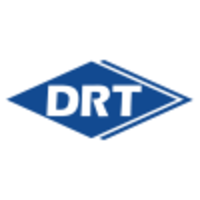Helping Owner Salvage Value After Industry Collapse
160M
Annual Sales
75M
Debt

DRT, Dayton Ohio
Challenge
Machine shop manufacturer of precision tooling and parts primarily for aerospace and packaging industries. $160 million in annual sales. $60 million credit facility, five bank lenders. $13 million equipment leases, four lessors.
- Company grew via acquisitions funded by bank debt – high leverage and tight liquidity.
- Company incurred loss issues with integrating two of the recent tuck-under acquisitions. Delays in transitioning accounts resulted in push-out of shipments/revenue causing a significant miss to financial projections and triggering defaults to FCC and Leverage covenants.
- Lenders decided to exit the credit, forbear on defaults with tight timeline for refinancing. Company obtained terms from non-bank to refinance in 90 days.
- Then a dramatic decline in business and leisure travel (caused by Covid) halted refinancing prospects for the aerospace business. Without a viable exit, the Lenders had to hold until capital markets returned.
- COVID ultimately reduced annual revenue by 25% and EBITDA by 50%. Company was on trajectory to exhaust cash, impairing Lenders’ 100% recovery.
Solution
- Developed plan to reduce fixed costs that included closing two facilities and obtaining rent concessions from landlords.
- Advised management to ignore customers’ requests to continue to build inventory orders at pre-COVID demand levels, preserving cash. Subsequent workdown of Inventory, adjusting for new revenue run-rate, helped provide cash liquidity.
- Established diligent Accounts Receivable monitoring and collections that mitigated an increase in charge-offs and DSO.
- Identified pricing issues, made recommendations to improve bidding process and costing methodologies.
- Obtained $10 million loan through the Payroll Protection Program.
- Negotiated forbearances and attainable amendments to debt service with Lenders.
- Periodically tested capital markets, restarted financing initiative when closing amounts could be reasonably attained.
- Maintained weekly financial projections and communications with Lenders and Lessors on initiatives and liquidity.
Results
- Cost-savings and efficiency initiatives resulted with stabilization of the Aerospace business EBITDA to break-even by year end.
- Improvement in working capital generated over $6 million cash liquidity, a lower, and sustainable, cash conversion cycle.
- 6 months later attracted capital proposals sufficient to payoff 100% bank debt plus provide go-forward liquidity.
- The Company closed on its recapitalization with a new 80% owner, repaying the bank debt and injecting the business with sufficient liquidity to endure and rebound.
- Equipment lessors, satisfied with liquidity forecasts, consented to continue.
- Bank lenders endured twelve months of forbearances (5), progressed from an impaired situation to a full recovery.
- Owner avoided a Chapter 11 which would have been personally devastating.



